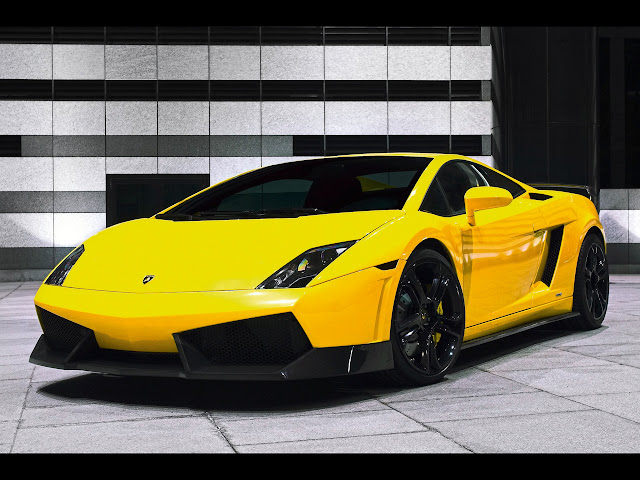Auto Car | Reiter Lamborghini Murcielago Streetversion 2009 | Automobili Lamborghini has released the first photographs of a limited edition Murciélago LP 650-4 Roadster. The Roadster version of the Murciélago will offer an uprated 6.5 litre V12 engine that produces 650 hp (478 kW) along with permanent four-wheel drive: hence the model’s LP 650-4 moniker. With 660 Nm of torque, top performance is at 0-100km/h (0-62mph) in 3.4 seconds. The top speed is around 330 Km/h (205mph).

The special edition model will be produced in a limited volume (50 units only), with a Grigio Telesto exterior that combines grey bodywork with a special bright orange Arancio LP 650-4 featured on the front spoiler and sills. The LP 650-4 logo applied to the car’s exterior is recognition of the car’s increased power. The car features orange brake calipers and a transparent V12-engine cover, which shows off the V12 engine behind the driver.

Interior features echo the car's striking grey-and-orange exterior: besides the orange touches, there is an asymmetric dash design, with black Alcantara Nera on the driver's side, including door panel and central tunnel, and black leather Nero Perseus on the passenger's side.

The increased power of the Murciélago engine, from 640 to 650 hp, will be unique to the Murciélago LP 650-4 Roadster: it demonstrates even further the developments that Lamborghini is able to offer from a current engine, and creates the exclusive characteristic of the Murciélago LP 650-4 Roadster.

The special edition model will be produced in a limited volume (50 units only), with a Grigio Telesto exterior that combines grey bodywork with a special bright orange Arancio LP 650-4 featured on the front spoiler and sills. The LP 650-4 logo applied to the car’s exterior is recognition of the car’s increased power. The car features orange brake calipers and a transparent V12-engine cover, which shows off the V12 engine behind the driver.

Interior features echo the car's striking grey-and-orange exterior: besides the orange touches, there is an asymmetric dash design, with black Alcantara Nera on the driver's side, including door panel and central tunnel, and black leather Nero Perseus on the passenger's side.

The increased power of the Murciélago engine, from 640 to 650 hp, will be unique to the Murciélago LP 650-4 Roadster: it demonstrates even further the developments that Lamborghini is able to offer from a current engine, and creates the exclusive characteristic of the Murciélago LP 650-4 Roadster.















































